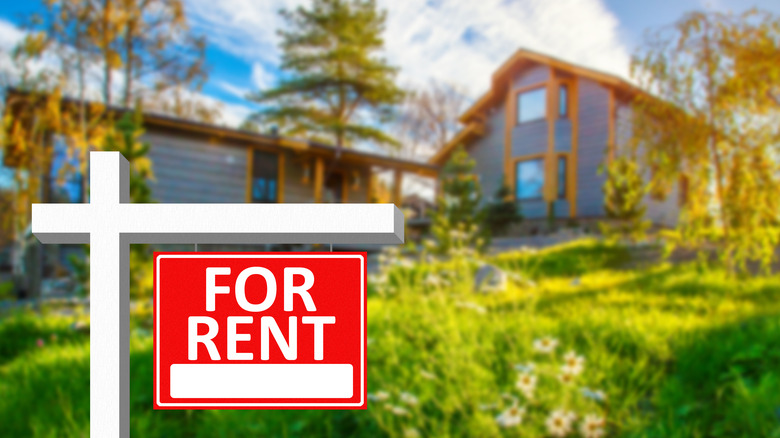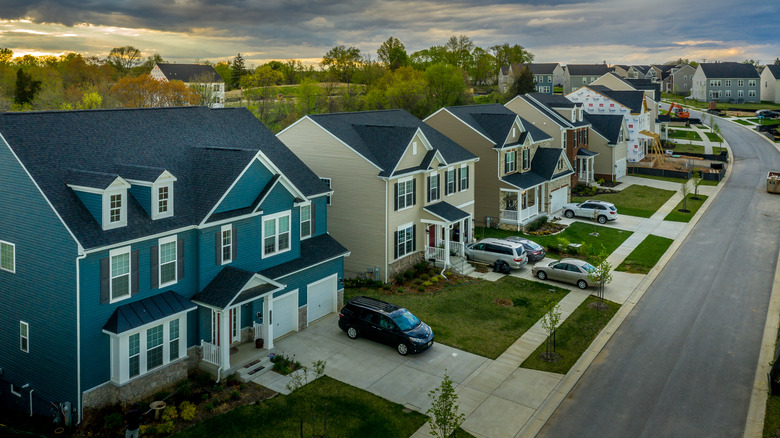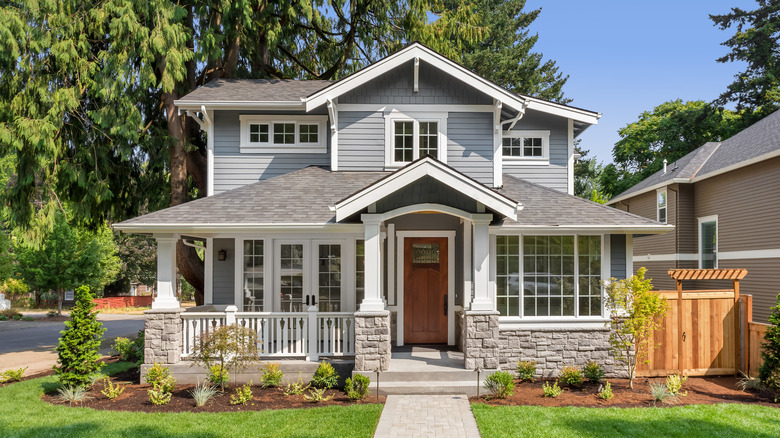The Number Of Build-To-Rent Homes Has Quadrupled In The Last Year
Homeownership, a goal that can help you build equity and wealth, is often seen as a sign of success. However, before people get to that point, they usually have to rent. Renting a unit is especially common among younger populations and in cities. According to Ruby Home Luxury Real Estate, 34.2% of households in the United States rent their homes compared to 65.8% who own. Renters are overwhelmingly under 45 years old, with the millennial generation (ages 27 to 41) making up 42% of total renters, many of whom find it difficult to break into the often treacherous housing market. Perhaps because of this, in the third quarter of 2022, build-to-rent communities accounted for 12% of single family homes being developed intentionally for renting rather than purchasing; this is a quadruple jump from 3% in previous decades, according to the National Association of Home Builders (via Realtor.com).
Though purchasing a house is a major financial goal, there are some benefits that come with renting versus owning a home, such as community amenities or repairs and expenses that get covered by a landlord. Renting also tends to be financially predictable, whereas owning a home can come with sudden surprises and expenses. Conversely, home ownership often provides more space and freedom than renting, allowing homeowners to decorate or renovate however they see fit.
What are build-to-rent homes?
Most homes that are rented out are owned by someone who chooses to lease the space. These homes were originally built with the thought that the owner would buy them to live in themselves. Build-to-rent homes, or entire build-to-rent communities, are created with the intention of housing long-term renters, according to Texas-based builder Wan Bridge. Occupants can often choose between single-family units, duplexes, or row homes. This alternative rent option is often found in a community that's managed by a property management company, which in turn, offers perks similar to living in a condo or apartment complex. These communities may have swimming pools, gyms, and community spaces, explains Fortune Builders, and the management companies take some maintenance like landscaping out of the residents' hands.
Saving up for a down payment sometimes forces potential home buyers to keep renting for much longer than desired. Build-to-rent homes are becoming more popular options, especially for younger people, who have outgrown traditional apartment living yet may not be ready to enter the competitive housing market.
Is a build-to-rent home a good option?
Demand is one of the primary driving forces behind build-to-rent homes. There were over 43,000 build-to-rent homes in 2018, as reported by the National Association of Home Builders (via CNBC). According to Roofstock, that number is expected to continue growing as millennials and members of Generation Z begin looking for homes in which to settle down. The high amount of student and personal debt accrued by these generations, coupled with soaring housing market prices, can push the traditional method of purchasing a home out of reach.
Because of the increasing demand for these types of properties, build-to-rent homes may prove profitable for those looking to invest in or develop real estate in the coming years. Economist Brad Hunter has predicted the annual number of build-to-rent units will double by 2024, per the National Apartment Association. These homes may be a good option for those looking to upgrade their amount of living space without having to commit to the entire home buying process, however, there is no evidence that it's any better than traditional renting in regard to helping people reach the point of owning their own homes.


